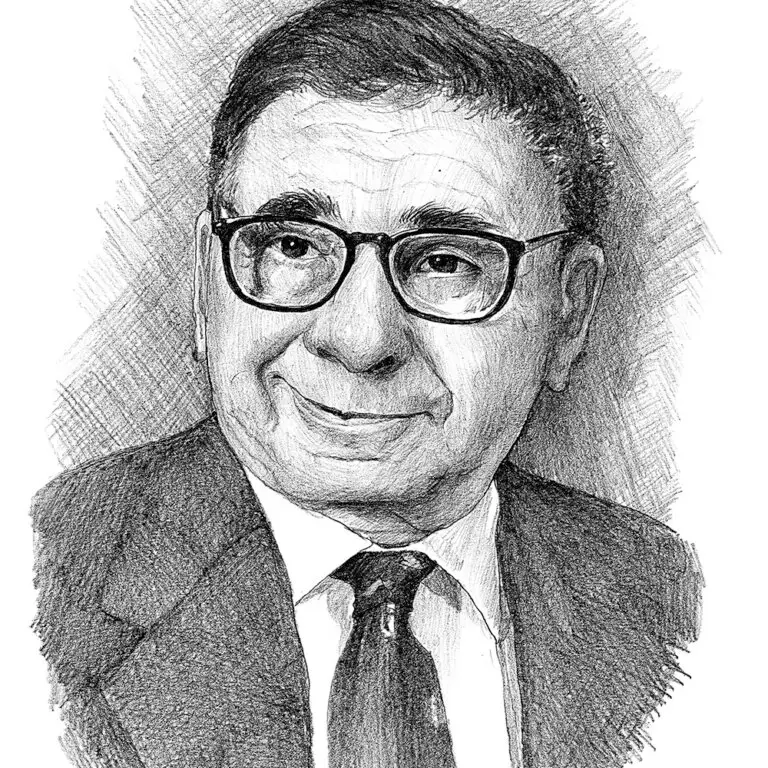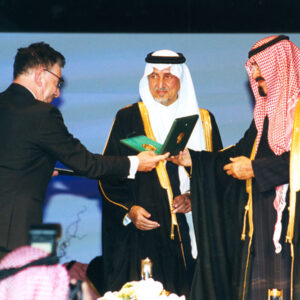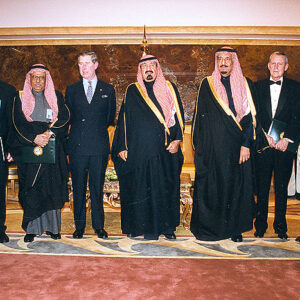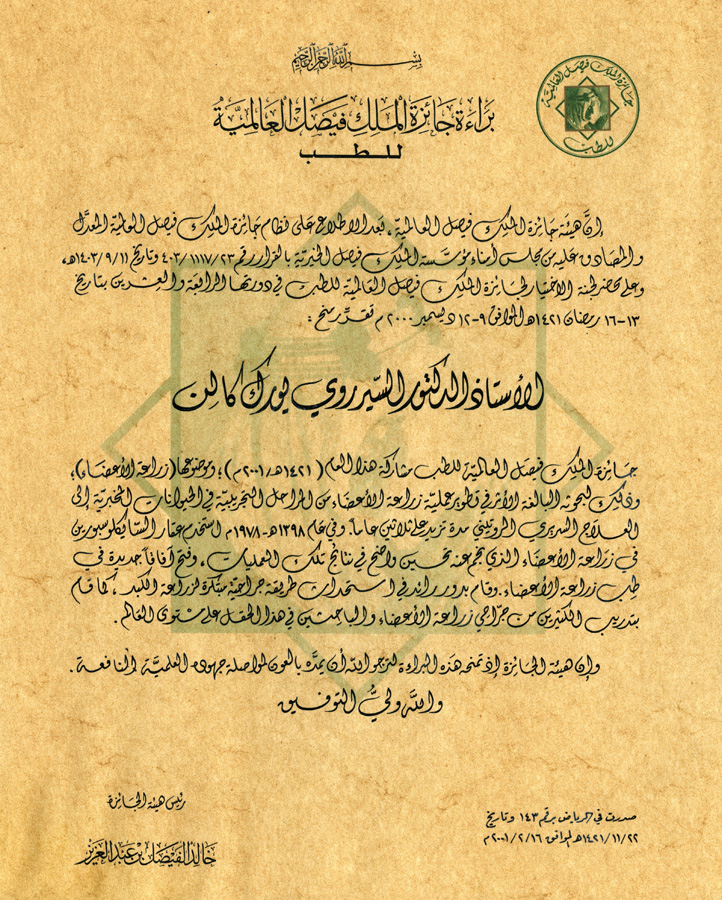

Professor Roy Calne
King Faisal Prize in Medicine 2001 Laureate
Topic: "Organ Transplantation "
Organ transplantation was a dream that came to fruition

Roy Calne received his M.B.B.S. from Guy’s Hospital Medical School in London in 1953. He practiced at Guy’s Hospital for one year after graduation, then served in the Royal Army Medical Corps for two years, and as an orthopedic surgeon in Oxford for another two years. Following a tenure at Harvard Medical School, he became a lecturer at St. Mary and Westminster hospitals in London. In 1965, he was appointed a Professor of Surgery at Cambridge University, where he started the University’s kidney transplant program, which had since performed an enormous number of operations. Sir Roy was also the Vice-President of the Royal College of Surgeons of England. He is currently Emeritus Professor at Cambridge University, Fellow of Trinity Hall in Cambridge and Yeoh Ghim Professor of Surgery at the National University of Singapore.
Professor Sir Roy Calne was a key figure in establishing life-saving transplantation as part of routine practice through his work on drugs to suppress organ rejection. He started working on organ transplantation in 1959 at the Royal College of Surgeons of England, where he described the first effective immunosuppression for kidney transplantation using 6-mercaptopurine. In 1962, he was the first to use a derivative of 6-mercaptopurine in human patients, a treatment later adopted as standard. He also pioneered the use of cyclosporin A in 1978, which was so successful in preventing rejection that transplantation of hearts, livers and lungs became common. In 1968, he started the first European liver transplant program. He is also credited with the first pancreas and intestinal transplants in the United Kingdom, in 1992 and 1994, respectively, as well as the first successful heart-lung transplantation and combined pancreas, liver, intestines, stomach and kidney transplantation in the world in 1992. He is one of the world’s foremost specialists in pediatric liver transplantation.
Professor Sir Roy Calne published more than 18 books and hundreds of articles and lectured at some of the world’s most prestigious medical schools. He received numerous other prizes, medals, honorary degrees and international invited lectureships. Sir Roy became an elected fellow of the Royal Society in 1974, and was knighted in 1986. The British Transplantation Society conferred the “Sir Roy Calne Award” in his honor in 1995. A bronze bust of Sir Roy holding a human liver is placed outside the operating theaters of Addenbrooke’s hospital in Cambridge. Aside from being one of the world’s champions of organ transplantation surgery, Sir Roy Calne is also a gifted oil painter and is a member of the Art Group 90.
This biography was written in the year the prize was awarded.
- He received many awards including:
- Lasker Prize for the development of liver transplantation in 2012.
- Lifetime achievement Pride of Britain award in 2014.



